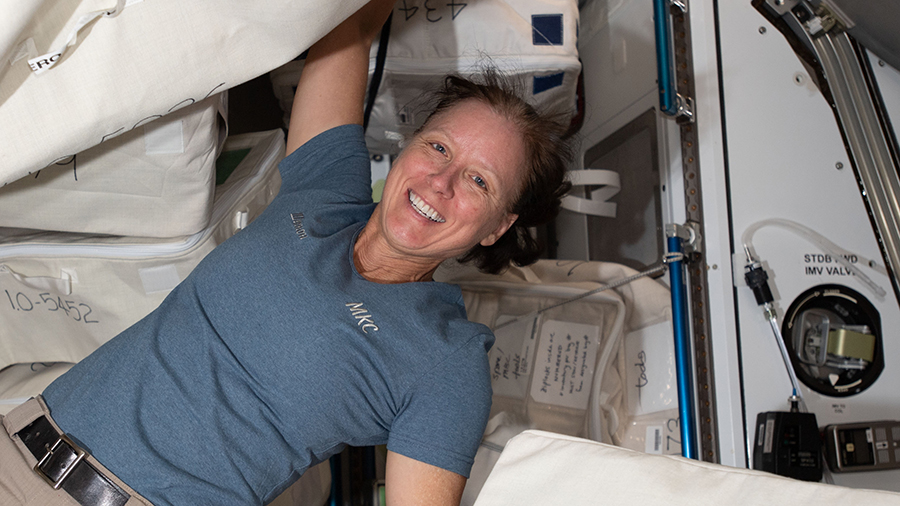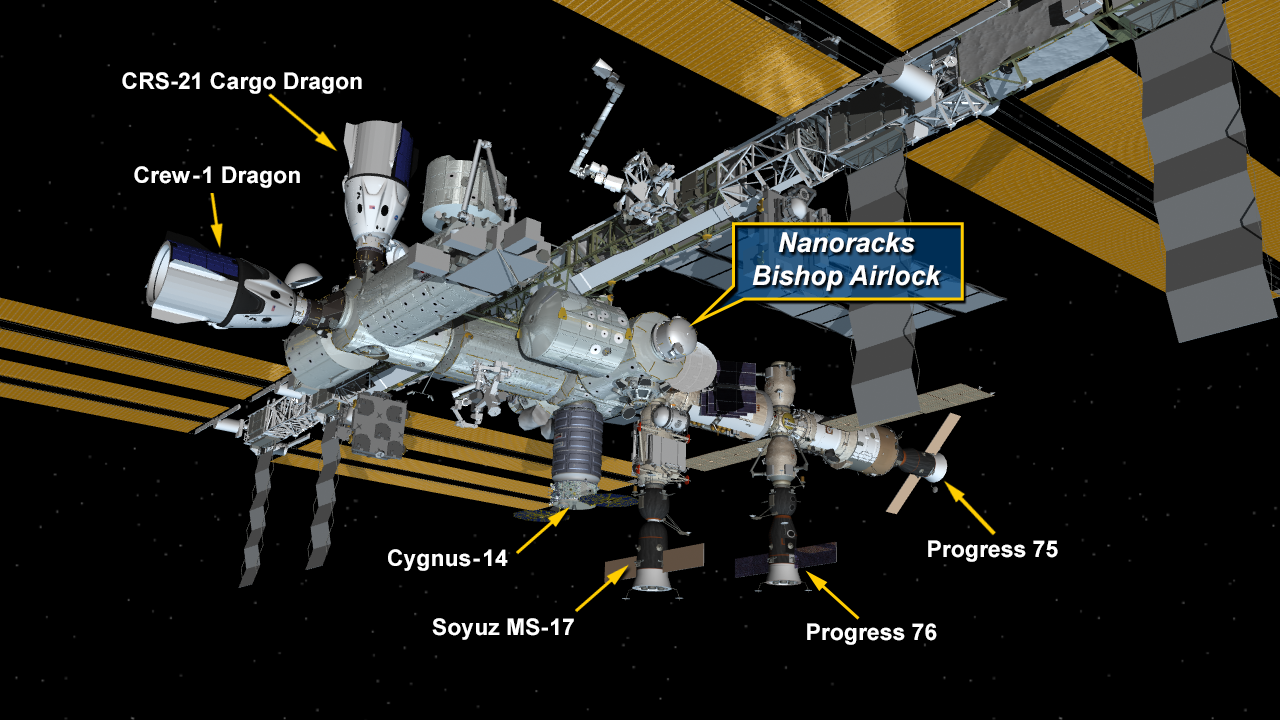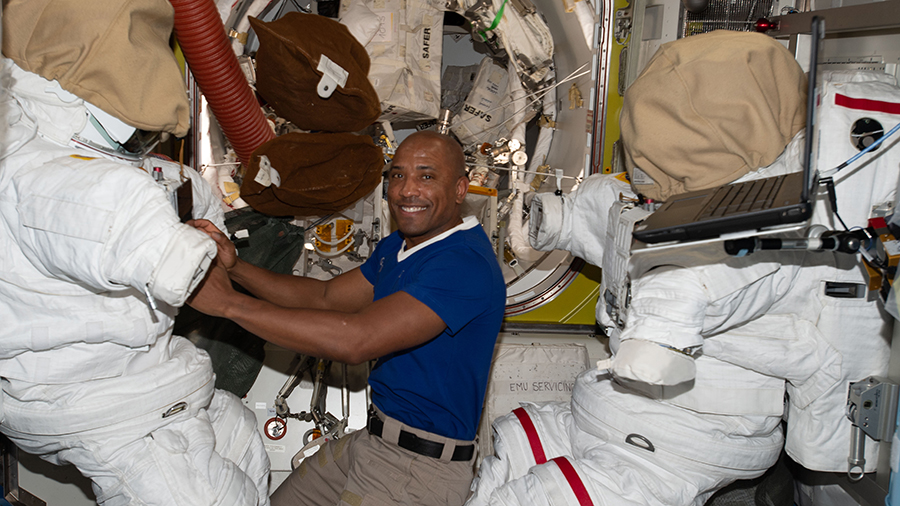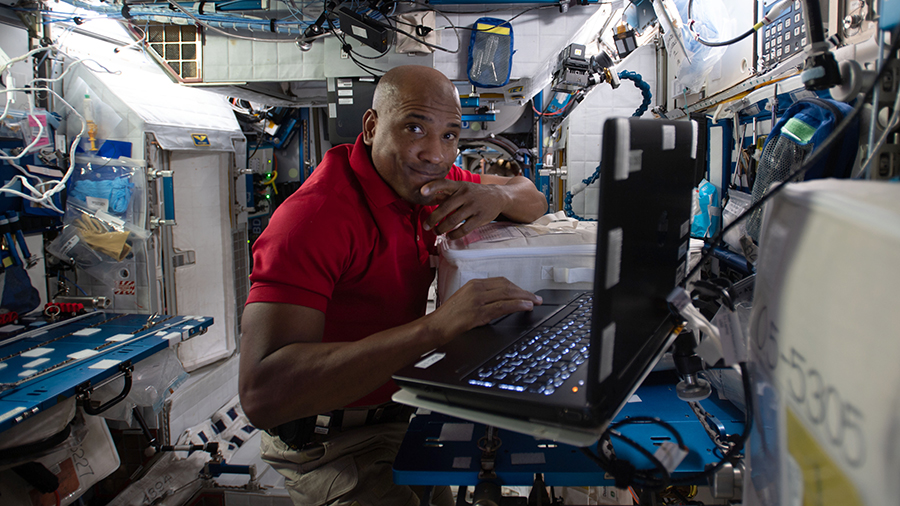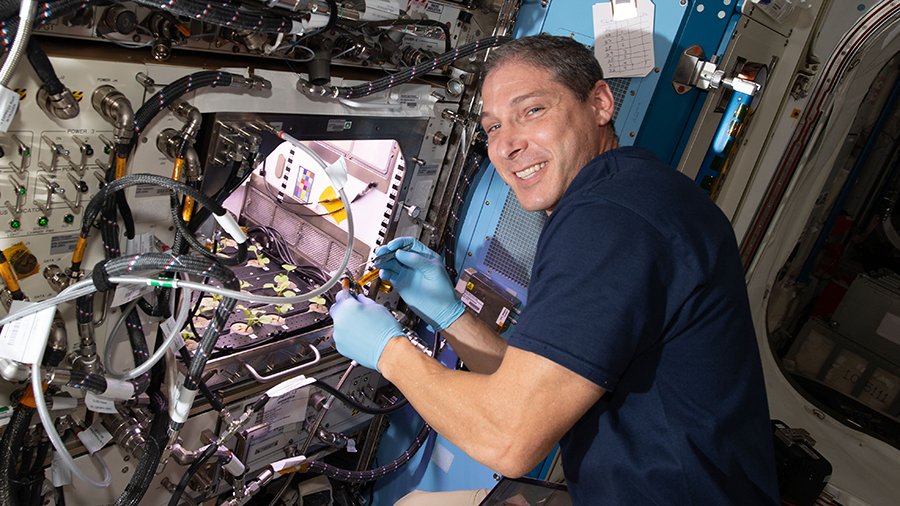
Two U.S. resupply ships are being readied for their departure next month from the International Space Station. Meanwhile, the Expedition 64 crew continued its intense schedule of space research with cardiac studies and radish harvesting today.
Northrop Grumman’s Cygnus space freighter is due to be the first cargo craft to leave the station in 2021 on Jan. 6. Ground controllers will remotely command the Canadarm2 robotic arm to release Cygnus into Earth orbit after 93 days attached to the Unity module. Cygnus will separate to a safe distance away from the station and continue orbiting Earth for an extended mission of flight tests and science experiments.
Less than a week later, the SpaceX Cargo Dragon will undock from the Harmony module’s space-facing international docking adapter. The upgraded version of the returnable space freighter will splash down the same day in the Atlantic Ocean loaded with space station hardware and science investigations for analysis.
The station residents also focused Tuesday on a host of space studies exploring heart cells, semiconductors and botany. These studies and others being hosted on the station may benefit human health and improve products around the world and on future space missions.
Samples of engineered heart tissues were serviced aboard the orbiting lab today for the Cardinal Heart study that seeks to understand space-caused cell and tissue abnormalities. Hardware is being set up this week to learn more about the process of semiconductor crystal growth to benefit Earth and space industries. Finally, radish plants are being harvested on the station this week helping botanists learn to manage food production in space and evaluate nutrition and taste in microgravity.


